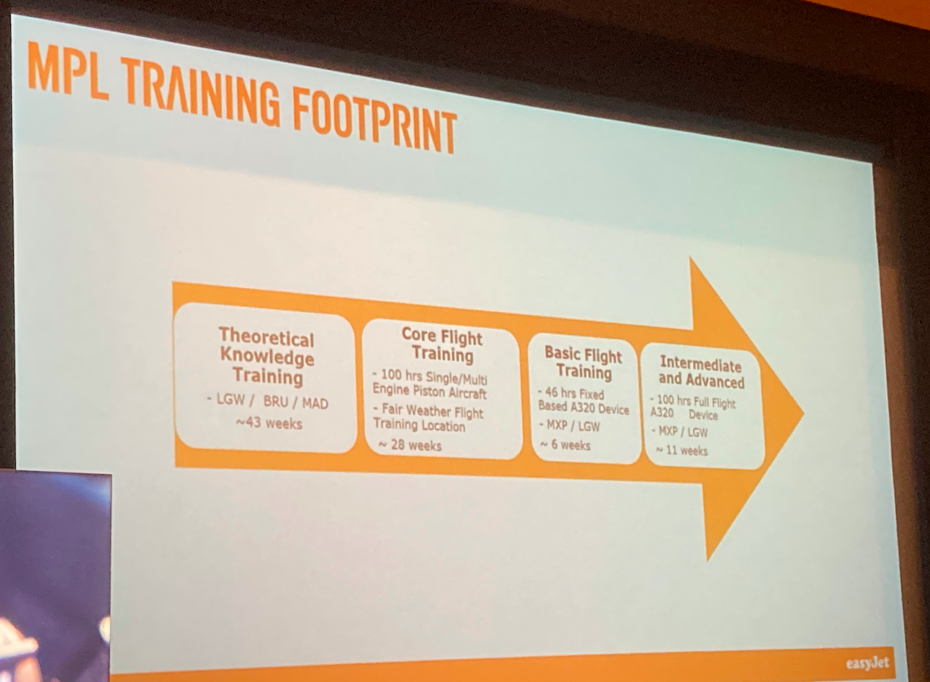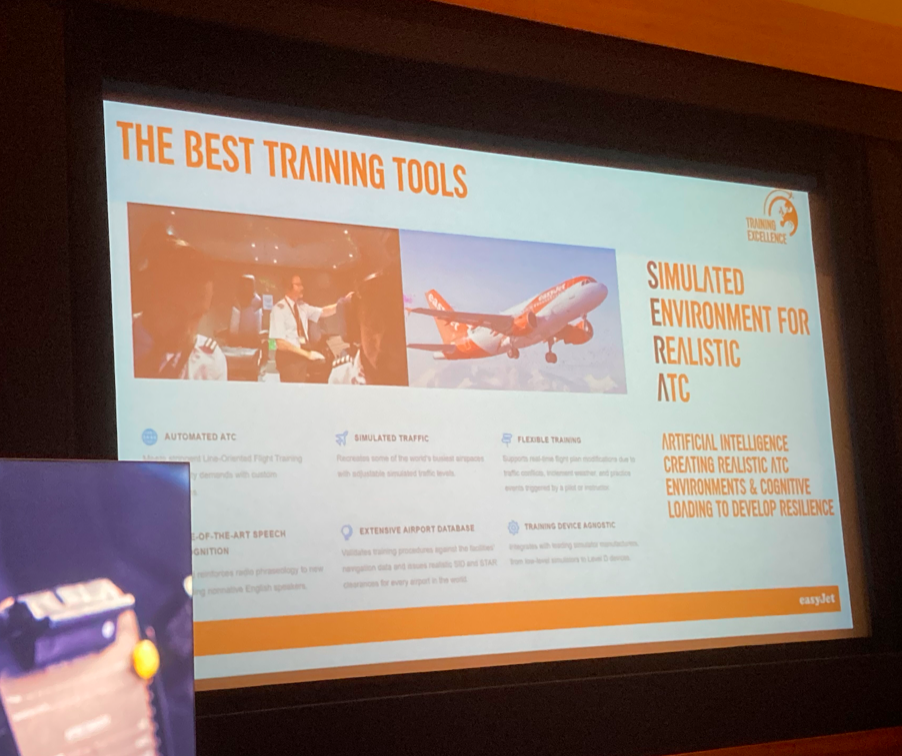Attending an EasyJet MPL programme talk – My Honest Thoughts and Insights
This talk was hosted by an EasyJet pilot who talked around the generation EasyJet Pilot Training programme.
For those not aware this course is a multi-crew pilot license (MPL) offered by CAE designed specifically for future EasyJet pilots. EasyJet has a long-standing relationship with CAE as their launch partner for their MPL programme. Once you enrol on the CAE EasyJet MPL course you will be trained around the EasyJet standard operating procedures (SOPs) from day 1.
I attended this seminar as I was really intrigued to know and hear more about the EasyJet MPL. Whilst I know I cannot afford to undergo this course – I still attend these talks. I’m a genuine believer there is always something to learn in every pilot interaction! And I love sharing any insight I gain with all of you reading.


The presenter started by outlining the course and how it runs –
In effect there are 5 phases including the ATPL theory stage. These include:
- ATPL theory: theoretical training (950 hours)
- Core flying stage (100 hours)
- Basic flying stage (46 hours)
- Intermediate training (76 hours)
- Advanced training (28 hours)
The core flying stage focuses on single-engine piston flying and advanced upset prevention recovery training (A-UPRT). Later, the basic flying stage centres its focus on crew co-operation and the skills needed to work in a cockpit setting. In the intermediate training, the focuses changes to flying the A320 and training under the EasyJet SOPs. The final stages covers the EasyJet type rating for the A320.
Where does the training take place?
The training takes place across two sites – Milan and London (Gatwick).
What is the cost of training?
The cost for training is €92,000 (£81,000).
What are the requirements to enrol to the course?
The requirements to apply are not too stringent – No previous flying experience is required, and basic level GCSEs is enough to apply. Have to be 18 or over. As well as have the right to work in the UK.
Is a MPL course even worth it?
In brief, yes and no. There are certain advantages and limitations to MPL. I will explain what I mean as you read on.
The EasyJet MPL is not one for me. This is because EasyJet’s direction and fundamentals don’t align with what I believe in. However, if an airline like TUI was to offer such a programme and if I could financially afford it – it would definitely be a programme I would consider. This is because TUI’s values and vision for the future is very much aligned with who I am. And most importantly, I can see myself working for an airline like TUI throughout my flying career.
Remember, MPL programmes are an interesting one. It is not a generic one-for-all license that can be used for any airline. Instead it is specific to the airline in question – so it’s important to consider whether you believe in the company’s vision and values. And considering whether it is an airline you can see yourself working for a long time.
Under a MPL programme once you reach 1,500 hours you can apply to have an unrestricted ATPL. After this you can apply to any other airline that you see fit.
ATPL or MPL?
MPL is airline-specific. The traditional cadet route via the Air Transport Pilot License (ATPL) provides an industry-wide license that is accepted in all airlines. But which one is best?
They both have their perks and downsides. An MPL is particularly useful if you see yourself working for a specific airline like EasyJet or TUI through your entire flying career – particularly if it is an airline you believe in and want to grow with. This is advantageous since it provides concrete job prospects and security. As an MPL cadet you immerse yourself with the airline specific SOPs and their core values from day 1 of training – as a result most MPL programmes will have conditional offer of employments attached to them.
However, an ATPL offers more flexibility than an MPL. For example, an ATPL license can be obtained through an 18-month integrated course or the modular pathway allowing a student to split their training based on affordability and their schedule. For those who would like to continue working through training – the modular pathway is a really useful option available. Instead, the MPL programme is an integrated, full-time course only.
ATPLs also offer more choice than an MPL. This is important particularly when you wish to apply to an array of airlines after receiving your license – you have the flexibility and choice to do so. Whereas an MPL cadet is restricted to the one airline and if the airline runs into bankruptcy or cancels their MPL programme midway (refer to T&Cs) then this leaves the cadet in a difficult position as their license has little use.
Overall thoughts…
I think the introduction of an MPL is a great airline-specific choice for cadets. The MPL pathway has and continues to build excellent traction. However, there are certain things to remember. For example, do the airline’s values and direction align with your core fundamentals? What is the training standard compared against the ATPL? In order to be able to answer this be sure to speak to MPL cadets and understand their experiences. And most importantly speak with the airline employees. Can you see yourself working and growing with the airline? Once you can answer these questions you can research more into the airline-specific MPL and consider whether it is a viable option for you.
